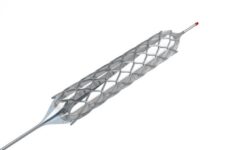Original title: Third-generation zotarolimus-eluting and everolimus-eluting stents in all-comer patients requiring a percutaneous coronary intervention (DUTCH PEERS): a randomized, single-blind, multicentre, non-inferiority trial. Reference: Von Birgelen C et al. The Lancet. 2014; Epub ahead of print. In the 3rd generation zotarolimus-eluting stent, platform was modified to increase flexibility and make implant easier in complex lesions. This study was…
Percutaneous closure versus surgical of the perimembranous interventricular communication
Original title: Transcatheter versus Surgical Closure of Perimembranous Ventricular Septal Defects in Children: A Randomized Controlled Trial. Reference: Jian Yang et al. J Am Coll Cardiol. 2014; Epub ahead of print. The ventricular septal defect (VSD) is the most common congenital heart disease, and perimembranous being the most common variant. In countries like USA surgery is considered…
Almost 40 % of those who initially receive clopidogrel then switch to prasugrel or ticagrelor in clinical practice.
Original title: In-hospital switching of oral P2Y12 inhibitor treatment in patients with acute coronary syndrome undergoing percutaneous coronary intervention: Prevalence, predictors and short-term outcome. Reference: Dimitrios Alexopoulos et al. Am Heart J 2014;167:68-76.e2. Given the availability of 3 Oral P2Y12 receptor inhibitors (clopidogrel, prasugrel, and ticagrelor) with different safety and efficacy profiles, the change from one to another…
Results of aortic valvuloplasty in the era of TAVI
Original title: Balloon aortic valvuloplasty in the era of transcatheter aortic valve replacement: Acute and long-term outcomes. Reference: Hélène Eltchaninoff et al. Am Heart J 2014;167:235-40. Late 80s initial enthusiasm in aortic valvuloplasty was quickly tempered with the publication of several studies showing a high rate of complications, poor durability and little or no impact on survival. Since…
The ball drug is effective in the femoropopliteal area
Original title: Drug-Eluting Balloon in Peripheral Intervention for the Superficial Femoral Artery. The DEBATE-SFA Randomized Trial (Drug Eluting Balloon in Peripheral Intervention for Superficial Femoral Artery). Reference: Liistro, F, el tal. J Am Coll Cardiol Intv 2013;6(12):1295-1302 The current treatment of choice in the femoropopliteal area is angioplasty, however, this procedure has a high rate of restenosis…
Decreased bleeding with radial access leaves little to bivalirudin for additional benefit
Original title: Bivalirudin or heparin in primary angioplasty performed through the transradial approach: results from a multicentre registry. Reference: Sciahbasi A et al. Eur Heart J: Acute Cardiovasc Care. Epub ahead of print. Bivalirudin benefit has been demonstrated in terms of bleeding; however when primary angioplasty is performed by radial access this information is not clear. To get…
The FFR changes the treatment strategy in almost half of patients
Original title: Outcome impact of coronary revascularization strategy reclassification with fractional flow reserve at time of diagnostic angiography. Reference: Van Belle E et al. Circulation. 2014 Jan 14;129(2):173-85. Any comprehensive registry has not been yet published that evaluates the impact of fractional coronary flow reserve (FFR) to change the strategy of revascularization on individual patients referred for diagnostic…
Malapposition in drug-eluting stents. Much more common and much less serious than we thought
Original title: Incidences, Predictors, and Clinical Outcomes of Acute and Late Stent Malapposition Detected by Optical Coherence Tomography After Drug-Eluting Stent Implantation Reference: Im E. et al. CircCardiovascInterv. 2014 Jan 14. [Epubahead of print] This paper analyzed the imaging of 351 patients by optical coherence tomography (OCT) who received drug-eluting stents over 356 lesions between 2009 and…
Ischemic versus anatomical risk. Is anyone better to help us decide therapeutically?
Original title: Predicting Outcome in the COURAGE Trial. Coronary Anatomy Versus Ischemia. Reference: G. B. John Mancini et al. J Am Coll Cardiol Intv 2013, Article in press. Anatomical risk, ischemic amount or a combination of both, are often factors taken into account for estimating the prognosis or choose a treatment strategy. The COURAGE study (Clinical Outcomes Utilizing…
Everolimus-eluting stent and DEB in restenosis for BMS. Good results of both with some expected differences.
Original title: A Randomized Comparison of Drug-Eluting Balloon Versus Everolimus-Eluting Stent in Patients With Bare-Metal Stent In-Stent Restenosis: The RIBS V Clinical Trial. Reference: Fernando Alfonso et al. J Am Coll Cardiol. 2014; Epub ahead of print. Drug-eluting stents (DES) have proven to be superior in terms of restenosis than bare metal stents (BMS). BMS, however due…









